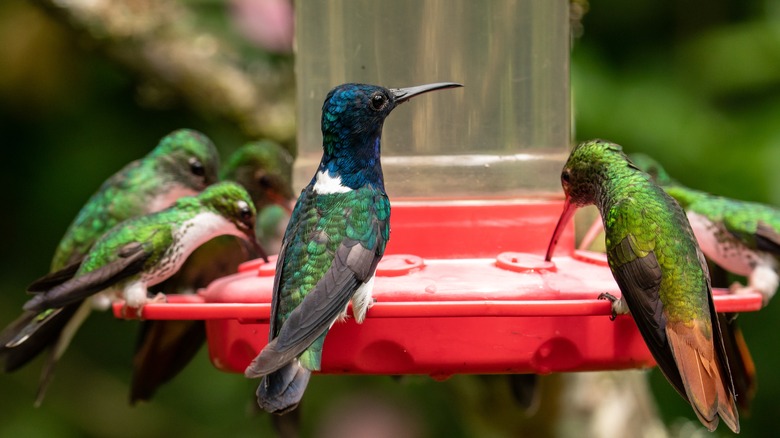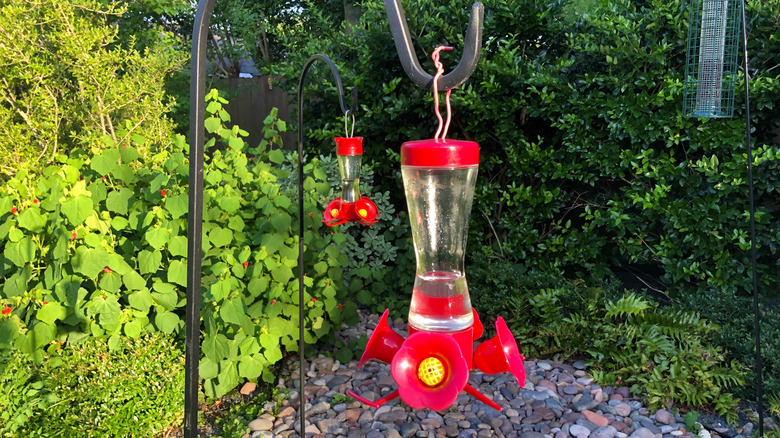How To Determine The Best Place To Put Your Hummingbird Feeder
With the captivating iridescence of their feathers and stunning color varieties, hummingbirds are nature's most magical and spirited visitors. They symbolize joy, playfulness, and creativity, and being able to attract them into your garden feels like a major win, not to mention a great photo opportunity. You might want to carefully consider the perfect spot for your hummingbird feeder before installing it. To determine the best place to put your hummingbird feeder, ensure it has the right amount of both open space and cover, is ideal for your viewing pleasure, and makes it easy for you to switch out the nectar often.
Choosing just the right spot is key for several reasons. As very small creatures that average between 3 and 5 inches in length, hummingbirds need to feel safe rather than exposed. Safety means that they have enough hiding places and can trust that the food in your feeder is reliable. To maintain food safety, you'll want to change the hummingbird feeder nectar daily in the summer so it doesn't go bad, even if you haven't had visitors that day. By placing the feeder properly, you'll create the ideal conditions for hummingbirds to trust your garden as a reliable food and shelter source so that they return again and again.
The best way to position your hummingbird feeder
For hummingbirds to feel safe, they need a combination of both open space and cover. Leaving enough open space around the feeder so they can visually locate it from different angles is important, but it also needs to be placed close enough to bushes, foliage, or trees so they can hide if they feel skittish. A good rule of thumb is to place the feeder within 10 to 15 feet of shrubs or other foliage where they can quickly take cover or hopefully nest. Additionally, if you add colorful flowers to the garden, they'll love it. Plus, flowers have an additional nectar source, which will keep them in your garden longer.
There are two other crucial placement considerations. You'll want to enjoy their company from a kitchen or living room window, so make sure the feeder is within view. At the same time, don't put it too close to your windows, as they risk flying into the glass. Therefore, keep the feeder at least 15 to 20 feet from the nearest window. Additionally, make sure the feeder is in a spot that's easily accessible since you'll be changing the nectar often. One good spot might be close to a porch or deck as long as you're not regularly cooking or smoking meat. Of course, the spot that fulfills all these criteria will be unique to the layout of your garden and home.

